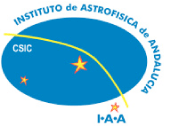Temperatures derived from dayglow emission on Mars biased
 The analysis of the altitude variation of two of the most prominent atmospheric emission systems in the UV spectral range in Mars, the CO2+ UV doublet and the Cameron bands, has been used to derive temperatures in the upper atmosphere of Mars since the beginning of the space age. Using a Global Climate Model able to simulate both emissions, we have found that, while the altitude variation of the CO2+ UV doublet allows recovering the actual atmospheric temperature above about 160 km, the temperature derived from the altitude variation of the Cameron bands can be up to 50 K higher than the actual temperature. The reason is that the emission in the Cameron bands is not only produced by CO2, as for the CO2+ UV doublet, but has a significant contribution from CO. We also find that the difference between the temperatures obtained from both emission systems could be used to derive the CO abundance in the upper atmosphere of Mars, very rarely measured before.
The analysis of the altitude variation of two of the most prominent atmospheric emission systems in the UV spectral range in Mars, the CO2+ UV doublet and the Cameron bands, has been used to derive temperatures in the upper atmosphere of Mars since the beginning of the space age. Using a Global Climate Model able to simulate both emissions, we have found that, while the altitude variation of the CO2+ UV doublet allows recovering the actual atmospheric temperature above about 160 km, the temperature derived from the altitude variation of the Cameron bands can be up to 50 K higher than the actual temperature. The reason is that the emission in the Cameron bands is not only produced by CO2, as for the CO2+ UV doublet, but has a significant contribution from CO. We also find that the difference between the temperatures obtained from both emission systems could be used to derive the CO abundance in the upper atmosphere of Mars, very rarely measured before.



